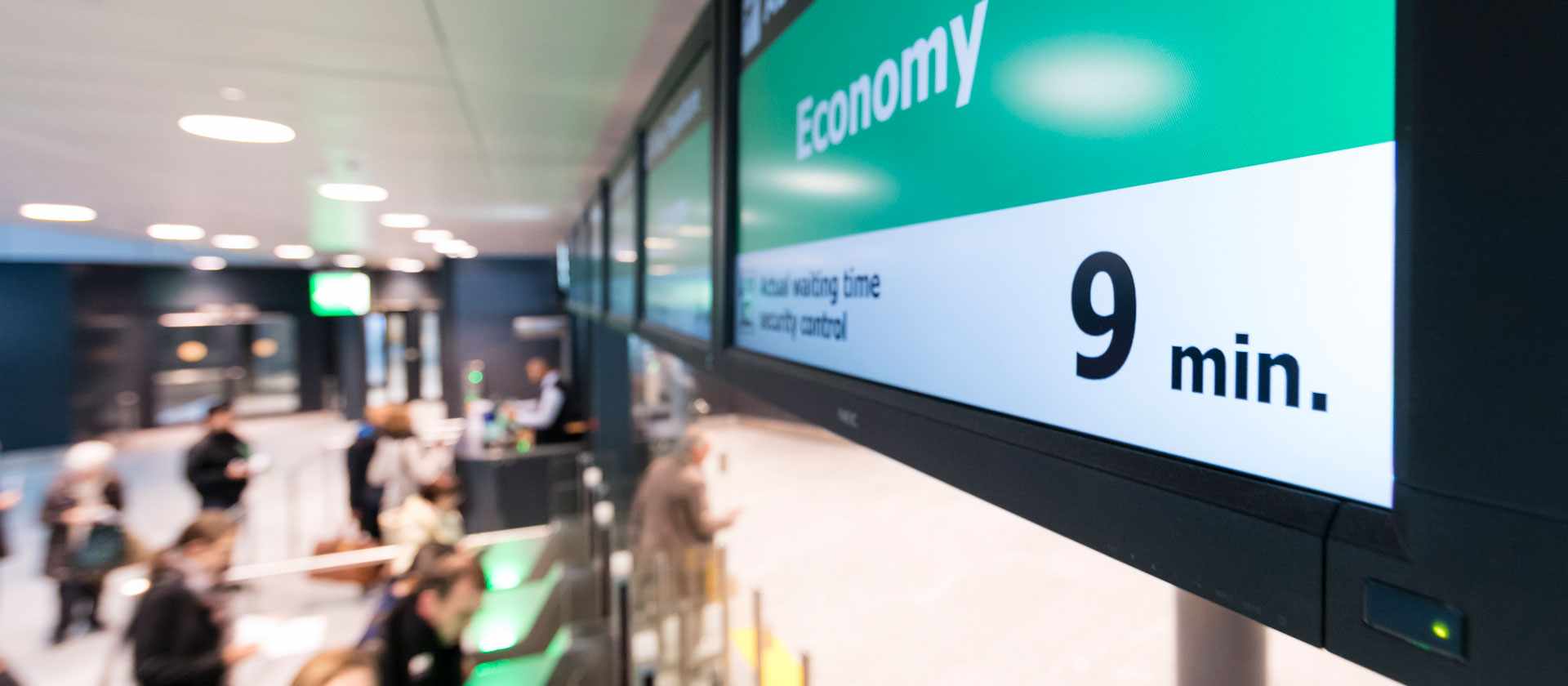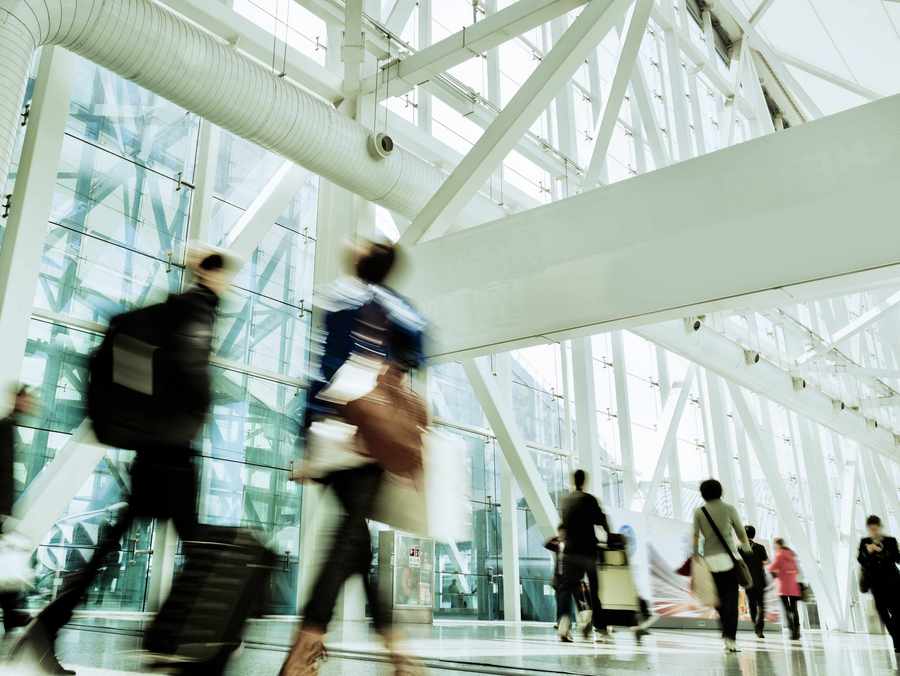A High-Tech Passage to India

About Indira Gandhi International Airport (DEL), Delhi
Indira Gandhi International Airport (DIAL) is an international commercial airport in the National Capital Territory of Delhi in India. Named after Indira Gandhi, the former Prime Minister of India, it is located in the southwest of the megacity, forming a single agglomeration with New Delhi, India. It handles more than 63 million passengers annually, mostly headed for domestic destinations. The airport is awarded as the best airport in Asia-Pacific in 2020 by Airports Council International.
About Kempegowda International Airport (BLR), Bengaluru
Kempegowda International Airport (BLR) is an international airport serving Bangalore, the capital of Karnataka, in the southern part of India. It is owned and operated by Bengaluru International Airport Limited (BIAL), a public-private consortium. The Airport is the third-busiest airport by passenger traffic and total cargo handled in India, behind the airports in Delhi and Mumbai, and is the 29th busiest airport in Asia. It handled almost 11 million passengers in the year 2020 with 311 aircraft movements a day.
About Chennai International Airport (MAA), Chennai
Chennai International Airport (MAA) is an international airport serving the city of Chennai, Tamil Nadu, India. It is located near Meenambakkam and is the sixth busiest airport in India. It was also the 49th busiest airport in Asia in 2018, being one of the four major airports in India under the top 50 list of 2018. In the year 2021, the airport handled over 5 million passengers.
Challenge
In 2016, Indira Gandhi International Airport (DEL) in Delhi was the first airport in India to begin a project with Xovis. Operated by Delhi International Airport Limited (DIAL), Delhi was ready to invest in digitalizing its operations and Xovis technology fits the bill. The airport team's optimism and drive to improve their passengers' travel experience by improving the management of passenger flow led to all major touchpoints in DEL's Terminal 3 being covered by Xovis 3D sensors. This initial project also included the Departure Security in DEL's Terminal 1. When Xovis landed, all IT requirements for the Xovis passenger flow management system were met without a single hiccough and the installation of the sensors was succinctly organized by the airport. This project went so smoothly that while Xovis was still configuring the system, DIAL was eagerly awaiting the new data – so much so that multiple follow-up projects were already set in motion.
Xovis and DIAL continued their happy collaboration by expanding coverage of the Xovis passenger flow management system in Terminal 3's International Departure Security area in 2017. The airport knew it needed this extension due to overflow and thanks to new reporting based on Xovis passenger flow management system data, they could see exactly in which direction to grow the space and how to cover it. The following year, the Terminal 3 Visa on arrival area and Domestic to International Transfer also became equipped with Xovis passenger flow management system.
By the third year of collaboration, with plenty of proof that Xovis passenger flow management system was helping to optimize operations, DIAL turned its view towards their Domestic Departure Security where they had seen a significant rise in the number of passengers over the past few years. In answer to the increase in domestic traveling, DIAL expanded the footprint of this security area with additional coverage in the available space near the queues. DIAL has also integrated displays where the current waiting times are shown in the arrival and departure areas for the passengers. The information provided on the display is taken from real-time data provided by the Xovis software.
Solution
From DIAL to BIAL – upward and onward. During this project, Xovis responded to an open, BIAL tender for Kempegowda International Airport, Bengaluru (BLR). The scope was expansive, covering all major touchpoints. The timing of the project moved along speedily, with two hundred Xovis 3D sensors covering entrances, check-ins, immigration areas for both arrival and departure, both international and domestic departure security areas, and Visa on Arrival. The system went live at the end of August 2020, which is quite a feat from all sides when one considers the year the world went through.
A connection that has strengthened this collaboration is that the local contractor, Infosoft Digital Design & Services Pvt. Ltd. (IDDS), who was responsible for all the networking infrastructure and sensor installation in BLR, was already familiar with Xovis hardware because they had worked on the sensor installation in Delhi. Not only is IDDS familiar with the Xovis sensors, but they have also even made customized brackets to hold the sensors in special environments – including a few tilted sensors in DEL Terminal 1 and the ones at BLR that are attached to concrete ceiling elements. Such professional relationships where people are willing to go that extra mile are the backbone of these successful projects.
Xovis Video: Delhi Airport Terminal 3 - Physical Distancing Indicator
Benefits
Creating the triangle, connecting the dots. To complete the current Indian airport triumvirate that is glad to be improving operations and the passenger experience based on data, Chennai International Airport (MAA) began a collaboration with Xovis in 2020. MAA's new terminal is under construction and most of the touchpoints will be covered by Xovis PTS. From the departure vestibules and check-ins to international and domestic departure security areas all the way through to gate counters and baggage claims, the new terminal will have access to the data it needs to optimize passenger flow. Sadly, due to the current global pandemic, construction work has slowed down from its regular plans of finishing by early 2021. Nevertheless, the plans remain in place and once the ceilings are finished, IDDS and Xovis will begin the installation.
In Delhi, one of the follow-up projects that has become full-blown is the coverage of Terminal 3 check-in and entrances – with over 500 sensors. As the check-in space is limited and already highly frequented during peak hours, the Xovis PTS provides valuable data for enhancing operational efficiency, including a physical distancing density map. The system generates auto-alerts and prompts airport officials to act swiftly as soon as overly crowded areas are identified at the terminal. If the situation is not brought under control within a stipulated time of 10 minutes, it again issues alerts to higher management.
The journey continues
Indira Gandhi International Airport has emerged as the second safest airport in the world by Trip Barometer and ACI Health Accreditation for its consistent effort to provide a safe and healthy environment to its flyers. With the aviation market picking up pace again, IDDS is looking forward to reaching more airports with strategic locations in India, which act as a hub for many smaller airports (leading to long wait times at peak hours), such as Guwahati, Ahmedabad, and Mumbai.
Xovis endeavors to continue its successful partnership with all three airports, as specific needs evolve and new challenges emerge. Even as the global economy changes, together with technology, we can make sure these changes are for the better and for everyone.
Connect with us today
Are you interested in Xovis technology and our solutions?


